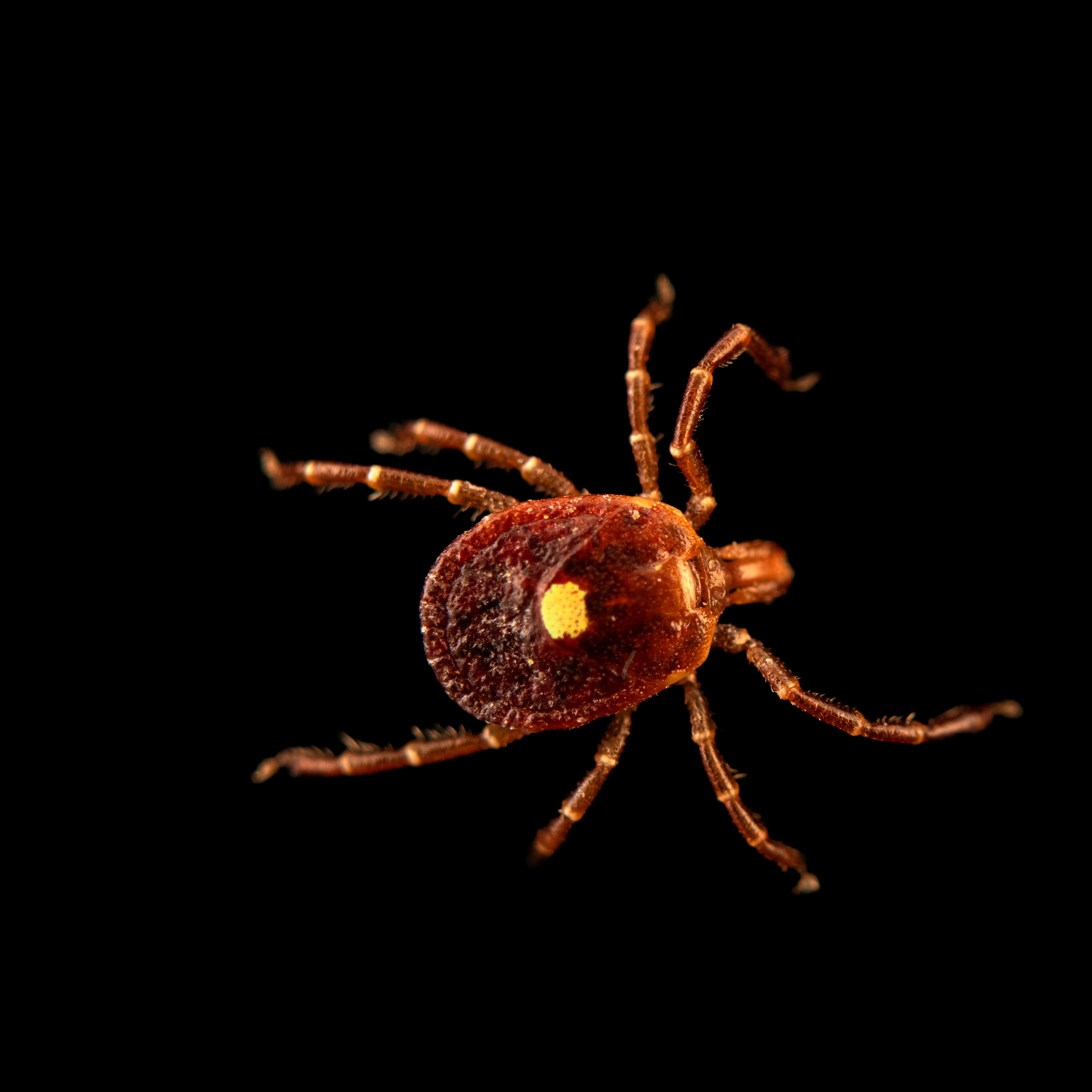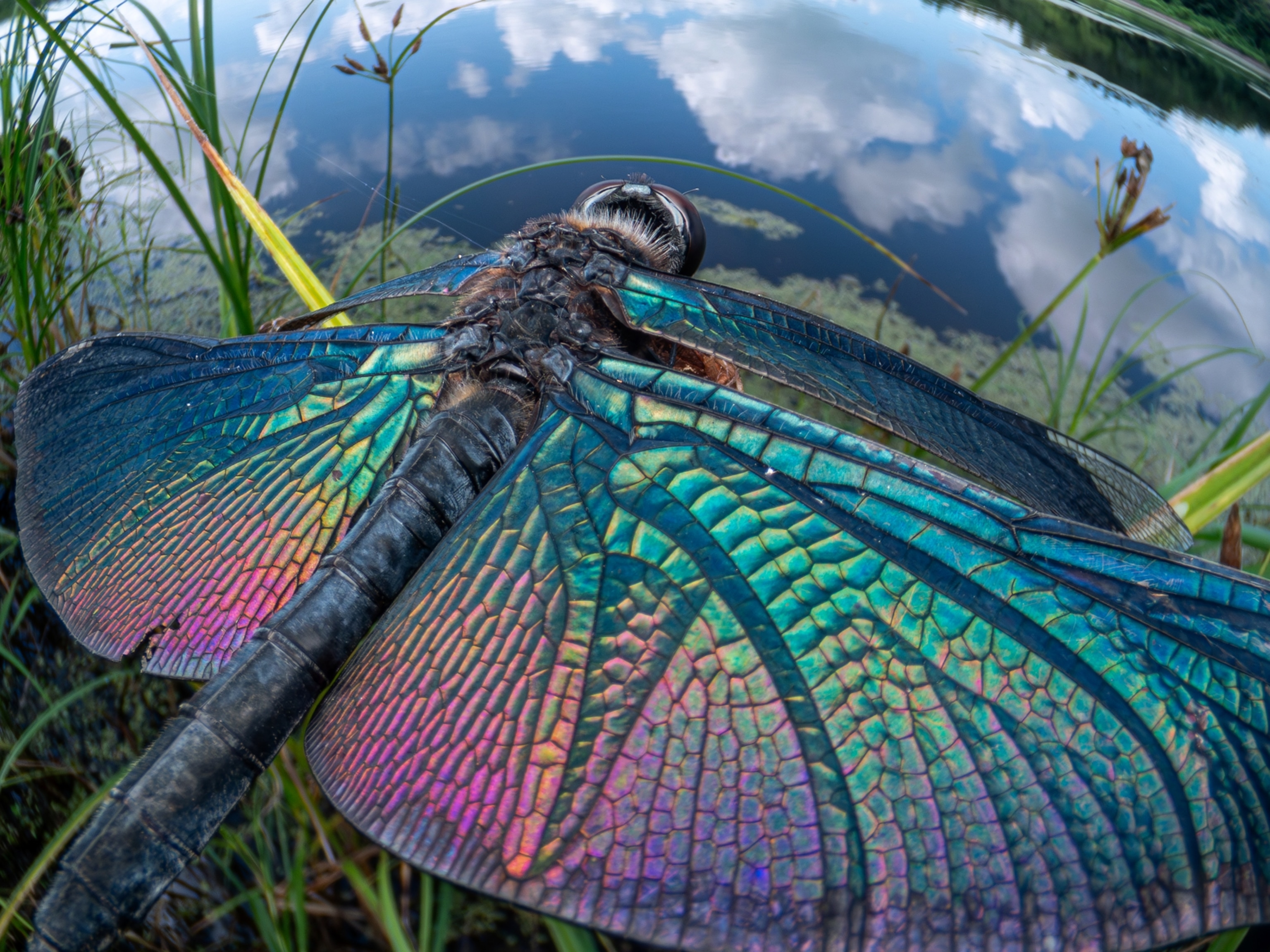Most of us have been on the wrong end of an insect stinger. While it’s usually an unpleasant experience, stings are nothing personal.
Animals sting for two reasons, to defend themselves and/or to catch prey. How they do it is wildly varied, from simple to elaborate.
Take jellyfish, whose “stingers are among the most sophisticated biological equipment ever evolved,” says Juli Berwald, an oceanographer and author of Spineless: The Science of Jellyfish and the Art of Growing a Backbone. It’s probably why they have remained the same for hundreds of millions of years.
“When you are stung, you interact with half a billion years of evolution," she says by email.
Jellyfish tentacles are lined with thousands of stinging cells called cnidocytes, or cnidae. These contain stinging capsules, or nematocysts, with spring-loaded caps.
Zooplankton, a favorite prey, give off vibrations that trigger the capsules to open, releasing toxin-filled microtubules with a sharp tip that impale and envenomate prey.
That capsule deployment clocks in at “five million g, which is the fastest motion in any animal,” Berwald says. (Watch: Dracula ant’s killer bite makes it the fastest animal on Earth.)
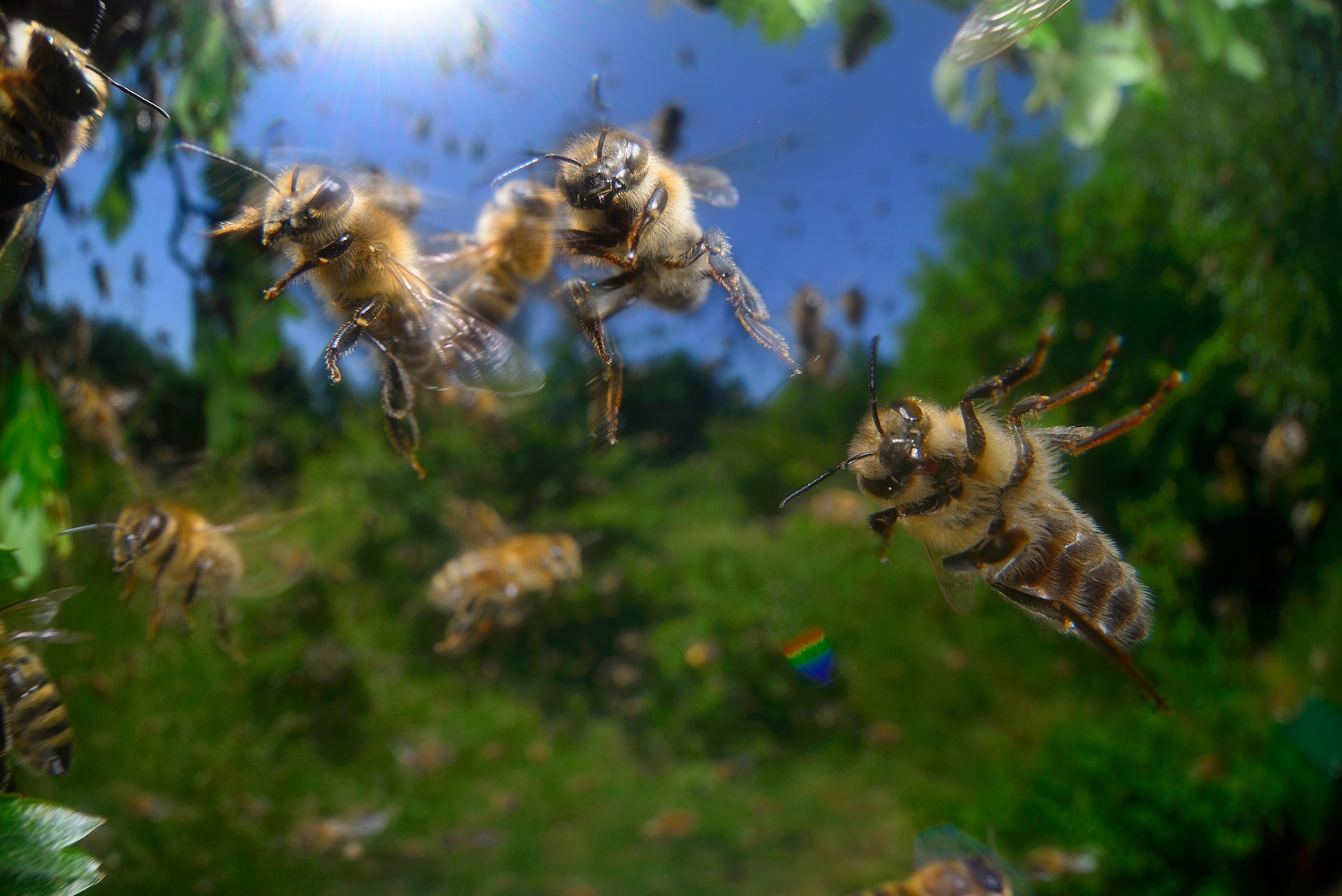
Masters of camouflage
Stonefish are the most venomous fish in the world, but if you looked right at one you might not even see a fish.
These experts at disguise lurk in shallow waters of the Indo-Pacific, the Caribbean, and the Florida Keys, looking like bumpy rocks and jagged coral on the ocean floor.
When a stonefish feels threatened, sharp spines pop up on its back, each with a venom sac at the base. If prey or predator make contact, the fish sends the venom through the hollow spines to stab the interloper—a delivery similar to that of a hypodermic needle.
("Immortal" Jellyfish Swarm World's Oceans)
There are several species of stonefish, all of which use their dorsal fins to bury themselves in the sand and become nearly invisible. This is a brilliant strategy for ambushing prey, but dangerous for people. Stonefish stings can cause intense pain, ragged breathing, cardiovascular damage, and dizziness.
Zombie powers
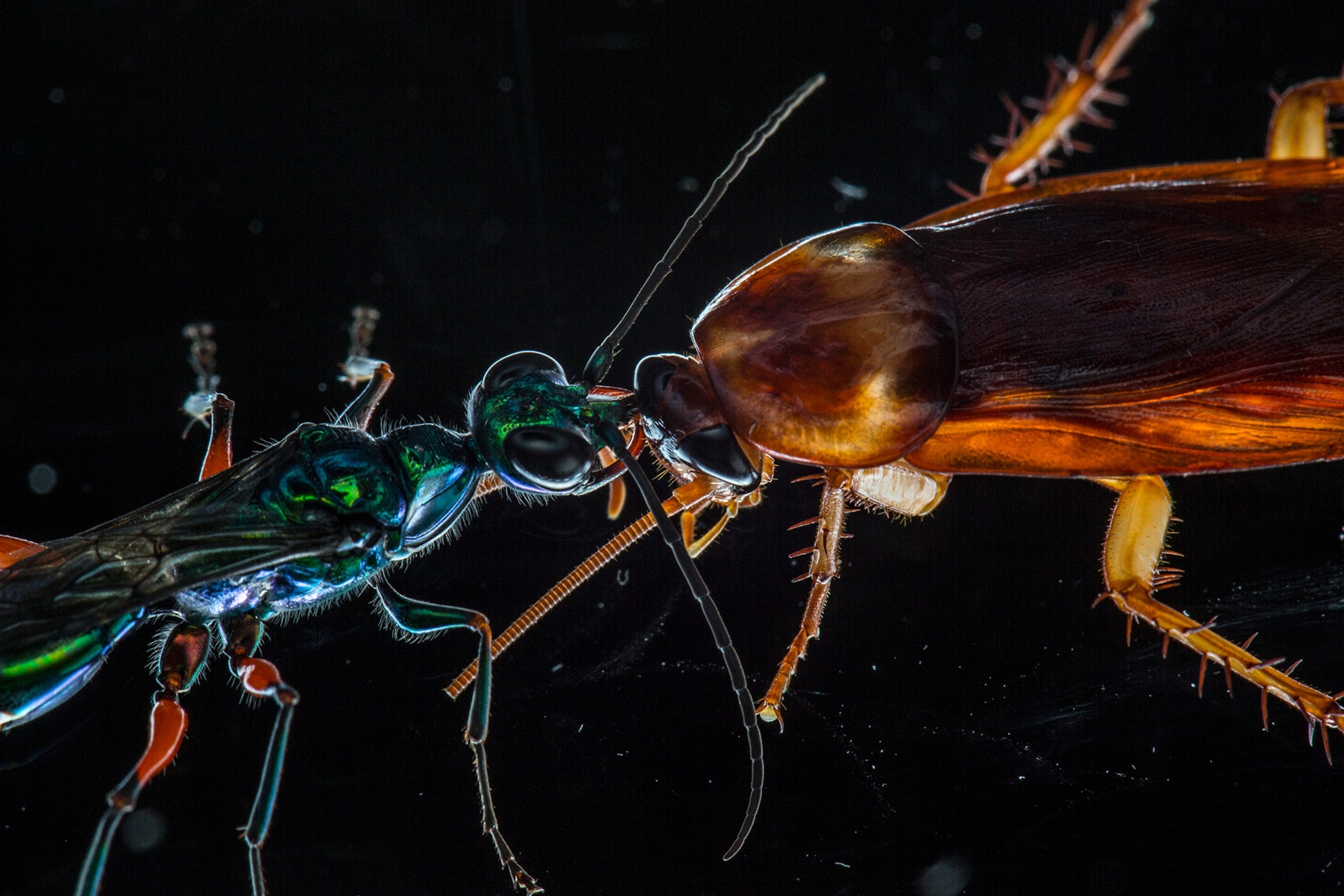
Bee and wasp stingers also work like hypodermics, but they’re actually modified ovipositors, or tubes for laying eggs. That’s why all stinging bees and wasps are female, which use the same organ for both activities.
(What's Giving Some Beachgoers Rashes? Get the Facts)
Carnivorous wasps deploy their stingers to paralyze or kill prey, such as caterpillars and flies. Some digger wasps impale their prey on their stinger, a way to transport their meal home to their nest.
Parasitoid wasps lay their eggs inside an insect. To accomplish this, the wasp must first take control of the host bug’s actions and behaviors—all of which is accomplished by stinging it.
The emerald cockroach wasp, or jewel wasp, is a beautiful peacock-colored predator with a villainous agenda. She will sting a cockroach at two precise points in its brain, poking around with her stinger until she finds its sweet spots.
The first one temporarily paralyzes the roach’s front legs, and the second impairs its escape reflexes. Eventually she’ll lay a single egg inside the roach’s leg, sealing it up in a hole so it can’t escape. The larvae then hatch and devour the still-living roach from the inside out. (Read about cockroaches that avoid becoming zombies.)
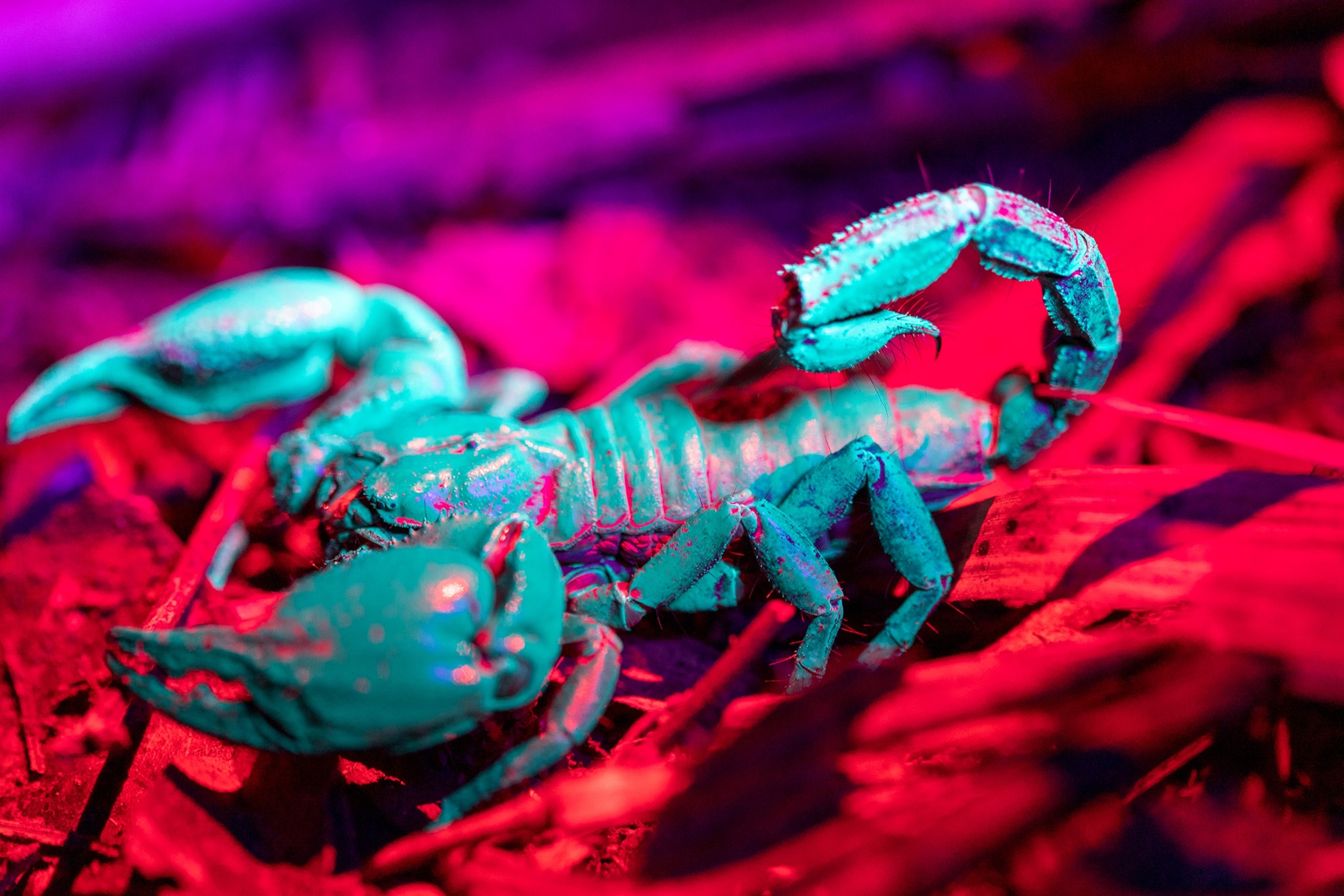
Super stingers
Bees sting, of course, but only in self-defense. In fact, the sting of all eight honeybee species are kamikaze missions.
It’s the only type of bee with double-shafted barbed stingers, which means each shaft has backward-facing hooks that anchor into their target’s skin. First one shaft goes in and embeds itself there, then the other, “walking” themselves into the skin, says Michael Burgett, professor emeritus at Oregon State University’s College of Agricultural Sciences.
When the stinger breaks off, so does the venom sac and the musculature that pumps the venom—meaning that the whole disembodied shebang keeps pushing its way into the victim’s skin.
It’s an effective defense, but always fatal for the female, who loses a large part of her body in the process.
Her death may seem like a high price, Burgett says, but the trade-off is evolutionarily sound.
“It’s a super form of altruism,” he says. A honeybee colony can have up to 40,000 bees, so the loss of a few to fend off a potential predator, like a bear, “is nothing relative to the overall health of the colony.” (Learn about the various jobs in a honeybee colony.)
Not to mention, predators—or people—who experience the barbed defense are more likely to steer clear of bees in the future.
Unless you were the late Justin Schmidt, a University of Arizona entomologist who studied the nasty subject of insect stings. In his book The Sting of the Wild, Schmidt published The Schmidt Pain Index, in which he rated the stings he willingly suffered—and described them with terrible, wonderful clarity.
The golden paper wasp, for example, creates pain that he called “sharp, piercing, and immediate. You know how cattle feel when they are branded,” he wrote.
'Don’t fear them'
Scorpions have a smooth stinger called a telson, which houses various parts, such as venom ducts and a barb.
Like most venomous animals, scorpions would prefer to hide from predators or crush prey in their claws than deploy their venom. Not only is the substance biologically expensive, taking weeks to replace, but not having it makes the arachnid even more vulnerable to attack.
That’s why scorpions have a range of stings at their disposal. A dry sting, with no venom, can be a warning to a potential predator. A sting that delivers prevenom, a milder substance than actual venom, can paralyze insects and hurt larger pests.
And when faced with bigger, more persistent predators or prey, a scorpion will deploy actual venom, a mixture of numerous potent toxins that have maximum and often deadly impact.
Of course, it’s important to note that of the 1,750 scorpion species on Earth, only 25 are lethal to people. In general, says Burgett, most stinging insects want to be left alone.
“Don’t fear them,” he says, “but do respect them.”




